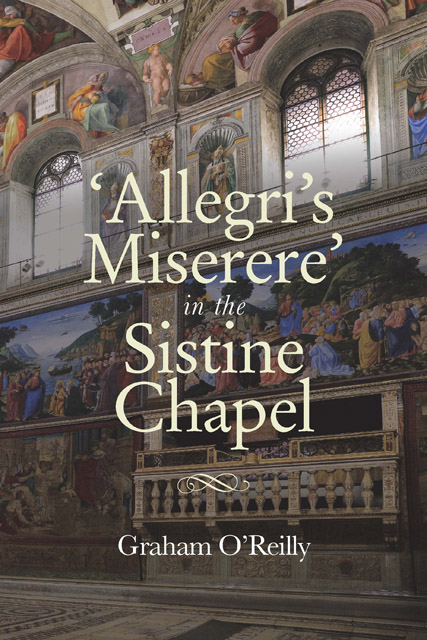Book contents
- Frontmatter
- Contents
- List of illustrations
- List of tables
- List of music examples
- Acknowledgments
- Note on the text
- Introduction: myth and reality
- Part One The Sixteenth and Seventeenth Centuries
- Part Two The Eighteenth Century
- Part Three The Nineteenth Century
- Part Four Performing the Miserere in the Twentieth Century
- Part Five Appendices, Editions and Notes
- List of appendices
- Bibliography
- Index
- Frontmatter
- Contents
- List of illustrations
- List of tables
- List of music examples
- Acknowledgments
- Note on the text
- Introduction: myth and reality
- Part One The Sixteenth and Seventeenth Centuries
- Part Two The Eighteenth Century
- Part Three The Nineteenth Century
- Part Four Performing the Miserere in the Twentieth Century
- Part Five Appendices, Editions and Notes
- List of appendices
- Bibliography
- Index
Summary
The College of Papal Singers
The official name of the choir of the cappella papale was the Collegio dei Cappellani Cantori della Cappella Pontificia – the College of the Chaplain Singers of the Pontifical Chapel. The Pontifical Chapel was where the Pope presided, and from 1483, when it was inaugurated, this was the Sistine Chapel – the Cappella Sistina. Taking its name from Pope Sixtus IV, for whom it was built, it replaced the crumbling Cappella Magna of similar proportions. The singers were eventually identified with the space in which they generally sang, and during the nineteenth century became known in English as the Choir of the Sistine Chapel.
Although various groups of singers provided music for papal offices from perhaps as early as the seventh century, notably the Schola Cantorum, and much fine music-making doubtless took place during the Avignon papacy in the fourteenth century, the modern history of the Papal Choir effectively begins after the end of the Great Schism in the 1420s. It was definitively re-established in Rome in 1443 by Pope Eugene IV. In the five years from 1479 to 1484, Sixtus IV increased expenditure on the choir by 50 per cent, and its numbers were increased from thirteen to twenty-five. By 1494, under Alexander VI, numbers had dropped to eighteen, and over the next few decades it was the enthusiasm for music of each pope more than anything else which determined the size of the choir.
In 1545 Pope Paul III drew up its most important constitution, the Constitutiones Cappellæ Pontificiæ, which fixed thirty-two as the ideal number of singers. Those on a full salary were known as partecipanti. There was also provision for a certain number of soprannumerarî – young singers who were paid less and were waiting for a fully salaried place. After twenty-five years’ service (extended in 1848 to thirty), the partecipanti could retire on full pay, having attained the status of giubilati. They could continue to sing if requested, but were under no obligation to do so. Sometimes they were asked to assume a secondo servizio, generally for ten years and with an increase in pay. For long periods of the choir’s history, and particularly during the nineteenth century, these numbers remained theoretical, and the choir was rarely at full strength. Weekday services were organised on a rota basis, but the full complement was required to be present for all the major feasts.
- Type
- Chapter
- Information
- Allegri's Miserere in the Sistine Chapel , pp. 7 - 18Publisher: Boydell & BrewerPrint publication year: 2020



